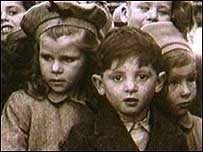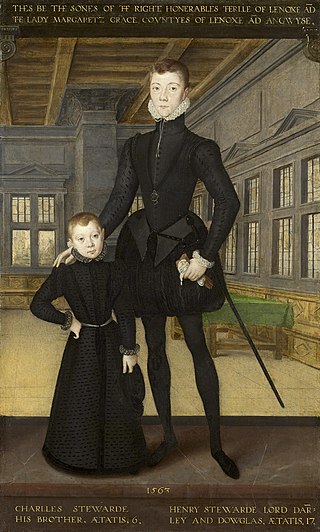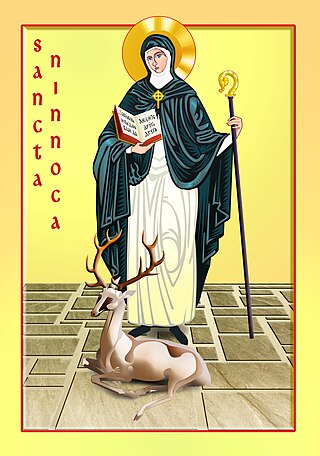
In Irish mythology, Aengus or Óengus is one of the Tuatha Dé Danann and probably originally a god associated with youth, love, summer and poetic inspiration. The son of The Dagda and Boann, Aengus is also known as Macan Óc, and corresponds to the Welsh mythical figure Mabon and the Celtic god Maponos. He plays a central role in five Irish myths.

In anthropology, kinship is the web of social relationships that form an important part of the lives of all humans in all societies, although its exact meanings even within this discipline are often debated. Anthropologist Robin Fox says that the study of kinship is the study of what humans do with these basic facts of life – mating, gestation, parenthood, socialization, siblingship etc. Human society is unique, he argues, in that we are "working with the same raw material as exists in the animal world, but [we] can conceptualize and categorize it to serve social ends." These social ends include the socialization of children and the formation of basic economic, political and religious groups.

In denominations of Christianity, a godparent or sponsor is someone who bears witness to a child's baptism (christening) and later is willing to help in their catechesis, as well as their lifelong spiritual formation. In the past, in some countries, the role carried some legal obligations as well as religious responsibilities. In both religious and civil views, a godparent tends to be an individual chosen by the parents to take an interest in the child's upbringing and personal development, to offer mentorship or claim legal guardianship of the child if anything should happen to the parents. A male godparent is a godfather, and a female godparent is a godmother. The child is a godchild.

Foster care is a system in which a minor has been placed into a ward, group home, or private home of a state-certified caregiver, referred to as a "foster parent", or with a family member approved by the state. The placement of a "foster child" is normally arranged through the government or a social service agency. The institution, group home, or foster parent is compensated for expenses unless with a family member.
Ambilineality is a form of kinship affiliation of cognatic descent that relies on self-defined affiliation within a given social system, meaning individuals have the choice to be affiliated with their mother's or father's group. Common features of societies that practice ambilineality are a shared set of land, communal responsibilities, and collective ownership of some segments of wealth and debt in their societies. This system of descent is distinct from more common genealogical structures in that rather than determining affiliation and descent using the standard determinants of biological and genealogical relation, it instead relies heavily on voluntary affiliation with one's group, oftentimes being determined by factors including residence.

The Nuer people are a Nilotic ethnic group concentrated in the Greater Upper Nile region of South Sudan. They also live in the Ethiopian region of Gambella. The Nuer speak the Nuer language, which belongs to the Nilotic language family. They are the second largest ethnic group in South Sudan. The Nuer people are pastoralists who herd cattle for a living. Their cattle serve as companions and define their lifestyle. The Nuer call themselves "Naath".
Fictive kinship is a term used by anthropologists and ethnographers to describe forms of kinship or social ties that are based on neither consanguineal nor affinal ties. It contrasts with true kinship ties.
A number of law codes have in the past been in use in the various Celtic nations since the Middle Ages. While these vary considerably in details, there are certain points of similarity.
Foster children in Canada are known as permanent wards. A ward is someone, in this case a child, placed under protection of a legal guardian and are the legal responsibility of the government. Census data from 2011 counted children in foster care for the first time, counting 47,885 children in care. The majority of foster children – 29,590, or about 62% – were aged 14 and under. The wards remain under the care of the government until they "age out of care." This age is different depending on the province.
The avunculate, sometimes called avunculism or avuncularism, is any social institution where a special relationship exists between an uncle and his sisters' children. This relationship can be formal or informal, depending on the society. Early anthropological research focused on the association between the avunculate and matrilineal descent, while later research has expanded to consider the avunculate in general society.
Kinship care is a term used in the United States and Great Britain for the raising of children by grandparents, other extended family members, and unrelated adults with whom they have a close family-like relationship such as godparents and close family friends because biological parents are unable to do so for whatever reason. Legal custody of a child may or may not be involved, and the child may be related by blood, marriage, or adoption. This arrangement is also known as "kincare" or "relative care." Kinship placement may reduce the number of home placements children experience; allow children to maintain connections to communities, schools, and family members; and increase the likelihood of eventual reunification with birth parents. It is less costly to taxpayers than formal foster care and keeps many children out of the foster care system. "Grandfamily" is a recently coined term in the United States that refers to families engaged in kinship care.

Family is a group of people related either by consanguinity or affinity. It forms the basis for social order. The purpose of the family is to maintain the well-being of its members and of society. Ideally, families offer predictability, structure, and safety as members mature and learn to participate in the community. Historically, most human societies use family as the primary purpose of attachment, nurturance, and socialization.
Breastfeeding is highly regarded in Islam. The Qur'an regards it as a sign of love between the mother and child. In Islamic law, breastfeeding creates ties of milk kinship that has implications in family law. Muslims throughout the world have varied breastfeeding traditions.
There are several notable cultural variations in adoption. Adoption is an arrangement by which an orphaned child or one whose biological parents are unable to care for them is "adopted". While all societies make provision for the rearing of children whose own parents are unavailable to care for them, cultures and legal systems treat an adopted child in different ways ranging from equivalent status to legitimate biological children to guardianship.
Milk kinship, formed during nursing by a non-biological mother, was a form of fostering allegiance with fellow community members. This particular form of kinship did not exclude particular groups, such that class and other hierarchal systems did not matter in terms of milk kinship participation.
In Irish mythology, Cian or Cían, nicknamed Scal Balb, was the son of Dian Cecht, the physician of the Tuatha Dé Danann, and best known as the father of Lugh Lamhfada. Cían's brothers were Cu, Cethen, and Miach.
The concept of nurture kinship in the anthropological study of human social relationships (kinship) highlights the extent to which such relationships are brought into being through the performance of various acts of nurture between individuals. Additionally the concept highlights ethnographic findings that, in a wide swath of human societies, people understand, conceptualize and symbolize their relationships predominantly in terms of giving, receiving and sharing nurture. The concept stands in contrast to the earlier anthropological concepts of human kinship relations being fundamentally based on "blood ties", some other form of shared substance, or a proxy for these, and the accompanying notion that people universally understand their social relationships predominantly in these terms.

Childhood in early modern Scotland includes all aspects of the lives of children, from birth to adulthood, between the early sixteenth century and the mid-eighteenth century. This period corresponds to the early modern period in Europe, beginning with the Renaissance and Reformation and ending with the beginning of industrialisation and the Enlightenment in the mid-eighteenth century.

Childhood in Medieval Scotland includes all aspects of childhood within the geographical area that became the Kingdom of Scotland, from the end of Roman power in Great Britain, until the Renaissance and Reformation in the sixteenth century.

Saint Ninnoc or Ninnog of Breton, also known as Nenooc, Nennoca, Nennocha, Ninnoc, Ninnocha, and Gwengustle, was an early medieval abbess born in Wales who died in Brittany. The text of Vita Sanctae Ninnocae, preserved in the Cartulary of Quimperlé, provides knowledge of her life and work.








